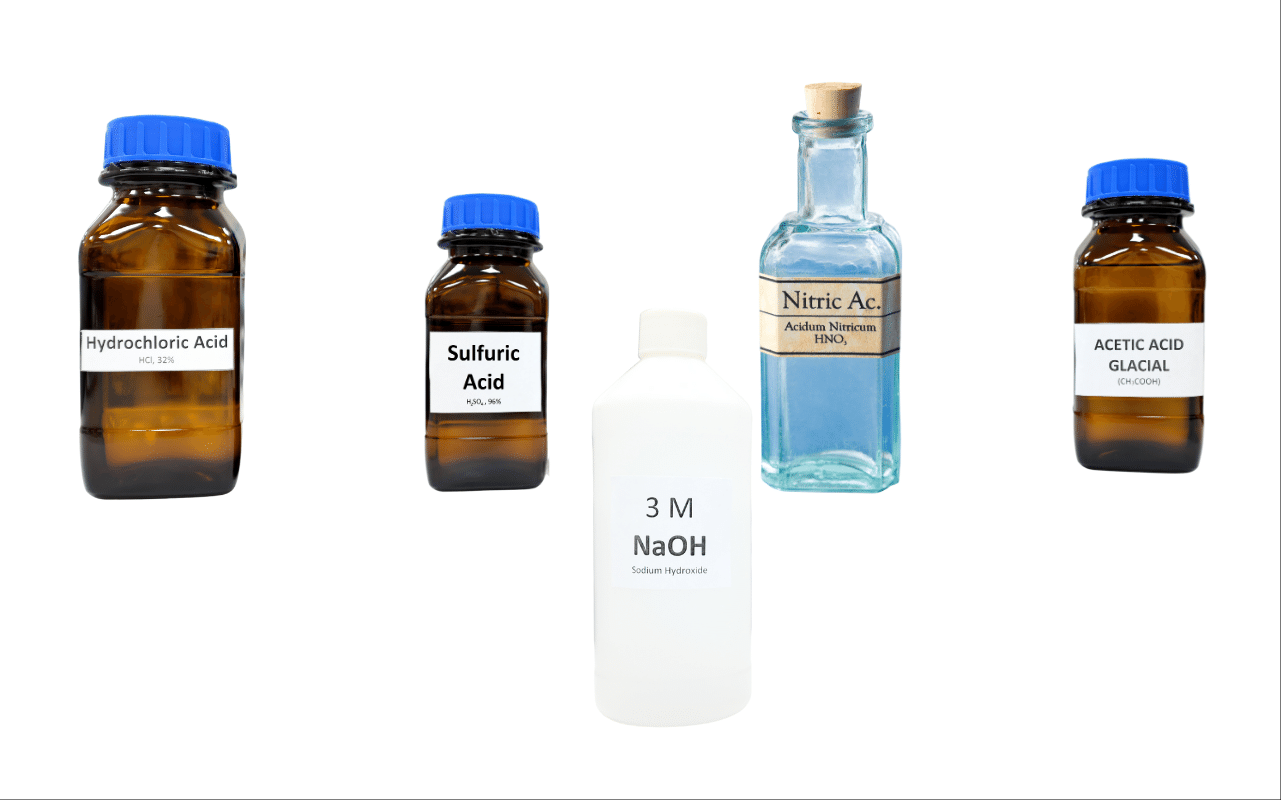4. Complete Activity 4.4 (Page 42). The teacher is requested to get the dilute solution of the following chemicals from his/her school laboratory or from a nearby school: hydrochloric acid, sulphuric acid, nitric acid, acetic acid, sodium hydroxide, ammonium hydroxide, calcium hydroxide (lime water). Demonstrate the effect of the three indicators on each of these solutions. Record your observations in Table 4.5.
Answer:
The activity is described below:
Aim: To test the solutions in Table 5.5 using red and blue litmus paper, turmeric paper, China rose solution as indicators.
Materials Required: Hydrochloric acid, sulphuric acid, nitric acid, acetic acid, sodium hydroxide, ammonium hydroxide, calcium hydroxide (lime water), red and blue litmus paper, turmeric paper, China rose solution, water, beaker. Your teacher should be able to get the dilute solutions of the chemicals from his/her school laboratory.
Procedure:
(i) Take 7-8 pieces each of red and blue litmus paper
(ii) Prepare 7-8 pieces of turmeric paper by making a paste out of mixing turmeric powder and water.
(iii) Prepare some China rose solution by soaking some China rose (Gudhal) petals in warm water in a beaker.
(iv) Take a drop of each solution and test it with a fresh red litmus paper, a fresh blue litmus paper, a fresh strip of turmeric paper. Also test the solutions by adding five drops of the China rose indicator to each of the solutions.

Observation: The completed Table 4.5 is shown below:
| S. No | Name of acid | Effect on litmus paper | Effect on turmeric powder | Effect on China rose solution |
| 1. | Hydrochloric acid | Turns blue litmus red, red litmus remains unchanged. | Does not change colour | Dark pink |
| 2. | Sulphuric acid | Turns blue litmus red, red litmus remains unchanged. | Does not change colour | Dark pink |
| 3. | Nitric acid | Turns blue litmus red, red litmus remains unchanged. | Does not change colour | Dark pink |
| 4. | Acetic acid | Turns blue litmus red, red litmus remains unchanged. | Does not change colour | Dark pink |
| 5. | Sodium hydroxide | Turns red litmus blue, blue litmus remains unchanged. | Turns red | Green |
| 6. | Ammonium hydroxide | Turns red litmus blue, blue litmus remains unchanged. | Turns red | Green |
| 7. | Calcium hydroxide (lime water) | Turns red litmus blue, blue litmus remains unchanged. | Turns red | Green |
Conclusions:
We conclude from the above results that hydrochloric acid, sulphuric acid, nitric acid, acetic acid are acids and sodium hydroxide, ammonium hydroxide, calcium hydroxide (lime water) etc are bases.
“4. Complete Activity 4.4 (Page 42). The teacher is requested to get the dilute solution of the following chemicals from his/her school laboratory or from a nearby school: hydrochloric acid, sulphuric acid, nitric acid, acetic acid, sodium hydroxide, ammonium hydroxide, calcium hydroxide (lime water). Demonstrate the effect of the three indicators on each of these solutions. Record your observations in Table 4.5.” – Solved.
Related Links:
Solution to Extended Learning Question 1
Solution to Extended Learning Question 2
Solution to Extended Learning Question 3
Solution to Extended Learning Question 4
Solution to Activity 4.1
Solution to Activity 4.2
Solution to Activity 4.3
Solution to Chapter 4 Acids, Bases and Salts


